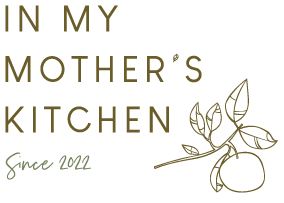In the pursuit of Wholeness (A story about atoms, biochemistry, and the bonds that form us).
I’ve been meaning to write something about covalent bonds – the bonds that are responsible for binding atoms together to make molecules that ultimately make us, well, us. I figured today - the National Day of Action Against Bullying & Violence – may just be the perfect day to remind ourselves of our true nature. That humanity (and all living things) are bound by bonds of cooperation, sharing and reciprocity. This is our nature.
Covalent bonds teach us, that at our most basic level (at the atomic level), life on earth would not exist without the bonds of cooperation and sharing.
Before I decided to study nutrition and subsequently biochemistry, I would have thought covalent bonds referred to some type of mechanical adhesive or glue. But these bonds are the reason you and I are here. Why all organic matter exists. Let me explain (in simple terms).
An atom describes the smallest coherent unit of matter. It contains an incredibly dense nucleus (made up of protons and neutrons) surrounded by a cloud of teeny-tiny electrons that covers an area approximately 100 000 times as large as the nucleus. Using the famous pea analogy, if the nucleus was the size of a pea, it would weigh approximately 250 000 kilograms and the electrons surrounding it would be moving around an area equivalent to a large sports stadium. An atom is mostly empty space!
Fun fact – an atom is about 99.99% empty space and if you removed that space from the atoms of all of the people on the planet, the entire human race would fit within the size of a sugar cube.
What has this got to do with cooperation, and sharing and human nature? This is where electrons (those teeny tiny sub-atomic particles surrounding the nucleus) come into play. It is very hard for scientists to predict where electrons are within the electron cloud at any time, so they have come up with a concept of shells which are basically concentric circles around the nucleus (see image below). What is most interesting to chemistry and to life itself (and to this story) – is what happens on the outermost shell (otherwise known as the valence shell or circle). It is the number and behaviour of the electrons on this outermost shell that determines life on earth. And biochemical reactions. And everything in life sticking together to make us - us.
Don’t be scared of this image - it is simply showing how atoms come together in mutual sharing of electrons (those negative symbols on the outside circle) to form molecules (like Oxygen and Nitrogen) that make life live.
Image courtesy of istock.com/Nandalal Sarkar
Atoms strive for one thing - Wholeness. Completeness.
Wholeness, to an atom, is 8 electrons on its outermost shell. The Valence shell (the outermost circle) on all atoms strives to be complete. Once they have 8 electrons on this outermost shell, they become stable. Less reactive. Kind of at peace with themselves. Elements, like Radon, have 8 electrons on their outermost shell. They are a very stable element – Radon doesn’t react easily with other chemicals as it doesn’t need any more electrons to be whole. Stable elements with 8 electrons on their outermost shell are called ‘Noble’ elements (how cool is that title). Other elements may have 6 electrons (like Oxygen) or 5 (like Nitrogen) or any other configuration under 8 in their outermost shell. However, without 8 electrons on that outermost shell, they are considered ‘reactive’ as they search for the electrons to make them ‘whole’. It is these ‘incomplete’ atoms that enable chemical reactions to occur.
So how do atoms go about becoming ‘complete’ (getting their much needed 8 electrons on their outermost shell)? Well, as it turns out, in the most part, they share. This is what is known as a covalent bond. This is where 2 (or more) atoms come together (to bond like adhesive) to make each other complete.
Atoms share their electrons to find fullness. They engage in mutual cooperation and reciprocity.
And yes, there are other bonds in nature – ones that involved stealing and bullying and borrowing – but in terms of what is essential to life on earth – it’s the bonds of sharing, of mutual cooperation, that make life happen.
O2 (a molecule essential to life on earth) is simply two Oxygen atoms sharing their electrons to find completeness. CO2 is three atoms (one Carbon and 2 Oxygen atoms) coming together to share electrons, so they are all complete. Together. Like a village. Or a community. And so it goes, on and on and on, to form bigger molecules like fatty acids, nucleic acids (that form DNA), glucose and amino acids.
These molecules, covalently bonded in mutual cooperation and sharing, essentially form us.
At our most basic, humanity (and all forms of life on earth) is the physical representation of numerous (I’m talking a gazillion plus some) acts of cooperation.
That makes me happy.
Contrary to popular opinion, bullying, violence and competition is not what defines humanity. What has created us is cooperation.
We are essentially a physical representation of reciprocity and sharing.
So today, on this day against bullying and aggression, remember that our nature and existence is built upon millions of acts of cooperation. Looking after each other is actually what defines us.
Be Kind.
And thank your mother. The great mother.
If you want to know more about science facts and pea analogies check out these websites:
www.scienceabc.com
www.khanacademy.org


